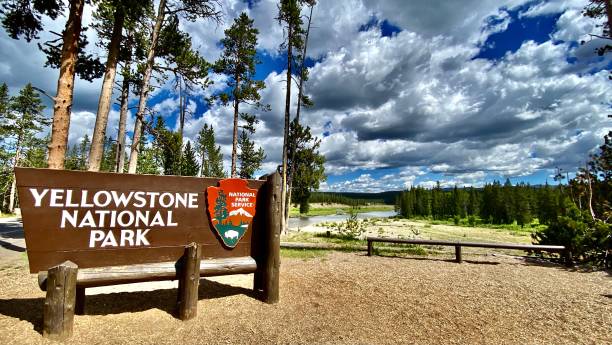
Geothermal Wonderland: Exploring Yellowstone’s Natural Marvels
Nestled in the rugged heart of the American West, Yellowstone National Park stands as a testament to the incredible forces that shape our planet. This geothermal wonderland, established as the world’s first national park in 1872, spans an astonishing 2.2 million acres across the states of Wyoming, Montana, and Idaho. Renowned for its otherworldly landscapes, erupting geysers, bubbling hot springs, and diverse wildlife, Yellowstone captivates the imagination of visitors from all corners of the globe.
Yellowstone’s most iconic feature is its collection of geothermal wonders, a result of the park’s location atop a massive supervolcano. Over 10,000 hydrothermal features dot the landscape, providing a captivating glimpse into the Earth’s fiery core. Among these, the Old Faithful geyser remains the park’s crown jewel. True to its name, Old Faithful puts on a show like clockwork, erupting approximately every 90 minutes, sending a plume of scalding water and steam skyward. The predictability of its eruptions has delighted park-goers for generations and is a must-see for anyone visiting Yellowstone.
Beyond Old Faithful, the park boasts a myriad of other geysers and hot springs. The Grand Prismatic Spring, with its vibrant rainbow colors surrounding a deep blue center, is the largest hot spring in the United States and an awe-inspiring sight. Mammoth Hot Springs, located in the northern part of the park, showcases terraces of mineral-rich water deposits that create a surreal landscape resembling frozen waterfalls. As visitors meander along the boardwalks, they are treated to an ever-changing panorama of dazzling colors.
But Yellowstone is much more than just geysers and hot springs. The park’s diverse and dynamic ecosystems are home to an array of wildlife species, making it a dream destination for nature enthusiasts and wildlife photographers. From bison and elk to wolves, bears, and elusive mountain lions, Yellowstone’s rich biodiversity offers unparalleled opportunities for wildlife viewing and conservation.
The Lamar Valley, often referred to as the “Serengeti of North America,” is a wildlife hotspot, where visitors gather before dawn with binoculars and cameras in hand to witness the breathtaking spectacle of predators and prey coexisting in their natural habitat. The heart-stopping howl of a wolf or the lumbering gait of a grizzly bear in the distance provides an intimate connection with nature that leaves a lasting impression.
Aside from its geothermal and wildlife wonders, Yellowstone also boasts a rich cultural and historical heritage. The park is home to several archaeological sites, showcasing evidence of human habitation dating back over 11,000 years. Native American tribes, including the Shoshone, Crow, and Blackfeet, have long revered the land, leaving behind their own unique imprints.
Preserving Yellowstone’s natural splendor is an ongoing endeavor, with the National Park Service dedicated to maintaining the delicate balance between conservation and recreation. Visitors are encouraged to practice Leave No Trace principles, ensuring that future generations can continue to enjoy the park’s majesty for years to come.
In conclusion, Yellowstone National Park is a geothermal wonderland that continues to captivate and inspire all who visit its boundaries. Its geysers, hot springs, and wildlife offer an immersive experience in the grandeur and beauty of nature. As we venture into this unique landscape, we are reminded of the profound forces that shape our planet and the need to protect and cherish these natural marvels. Whether you seek adventure, tranquility, or a profound connection with the natural world, Yellowstone stands as an enduring testament to the awe-inspiring wonders of Earth’s geothermal heart.
